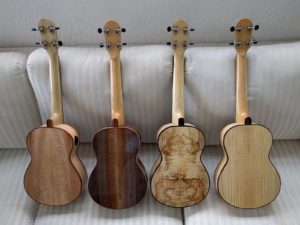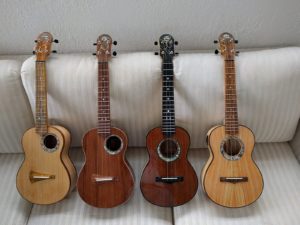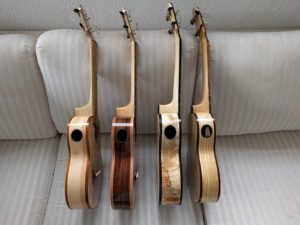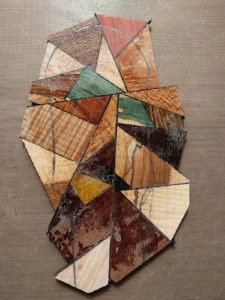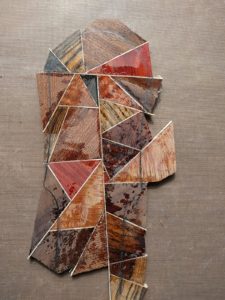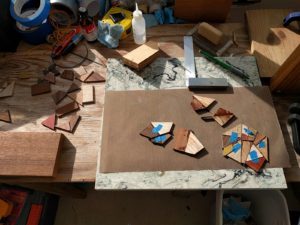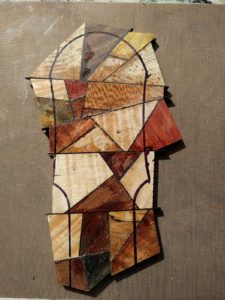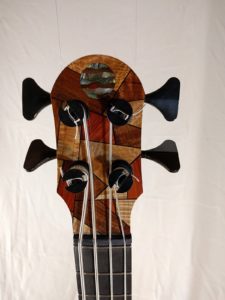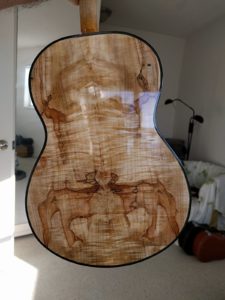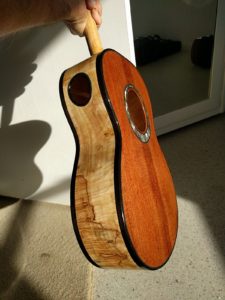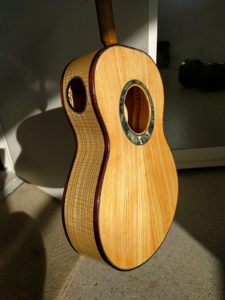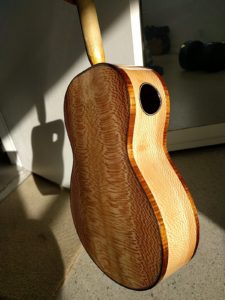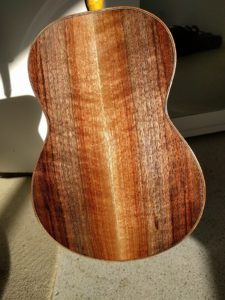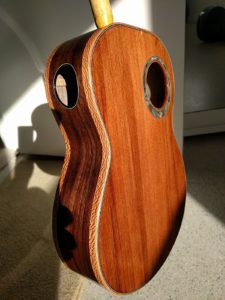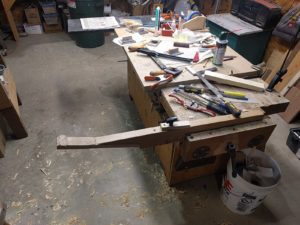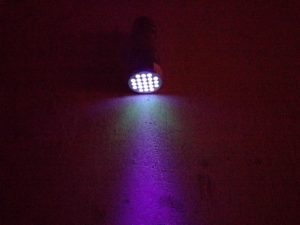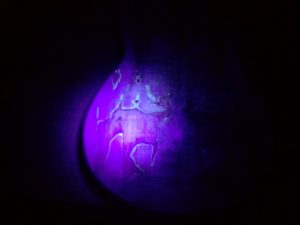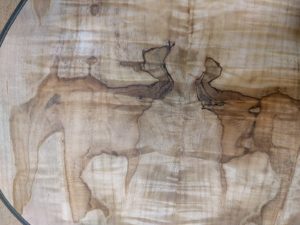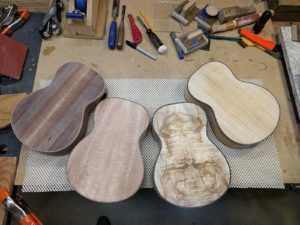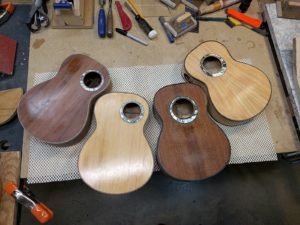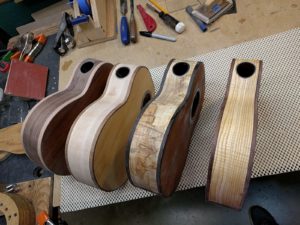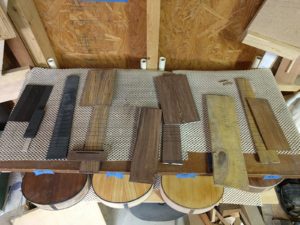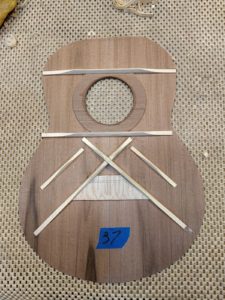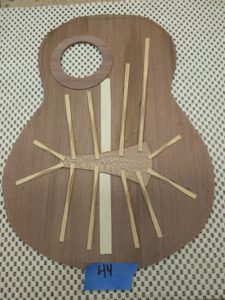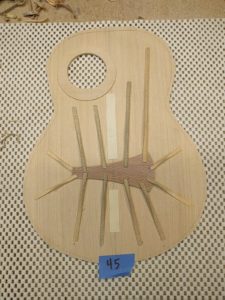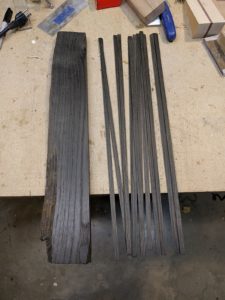The latest set of four is really good. The best set I have made to date. They all sound great. Two of them, the walnut & redwood kasha and the ambrosia silver maple & redwood are already spoken for, but it is hard to let them go. A mother hen likes to keep the new chicks close.
All the instruments in this set involve two new structural elements. They all have radiused fingerboards and side sound ports. A radiused fingerboard is supposed to make playing, particularly the playing of barre chords, easier since a slightly rounded fingerboard cross section mirrors the shape of a finger. Not being a player, I can not really comment on this, but on the small scale of a ukulele I kind of have to question whether it really makes much of a difference. A radiused fingerboard does complicate the build process however.
A side sound port is designed to project more sound up to the player. I was a bit skeptical, but with these four there is a really noticeable difference in the sound between having the sound port open, and covering it with your hand. A sound port seems to make the instrument sound more lively and also seems to increase the volume. They seem to add a lot and are not that difficult construction-wise once I got things worked out.
For most of what I build these days the back and sides started with me and a chain saw, along with fingerboard and bridge material. Bold items below started with me and a chain saw or at least started with rough boards from a local source.
The latest four, from left to right:
Kasha tenor – Port Orford Cedar top, sycamore back & sides, koa binding, radiused Florida black olive fingerboard & bridge, koa headplate, side sound port.
Kasha tenor -recycled redwood top, black walnut back & sides, sycamore binding, radiused casuarina fingerboard, bridge & headplate, side sound port.
Tenor – recycled redwood top, ambrosia curly silver maple back & sides, ancient bog oak binding, radiused Richlite fingerboard, ebony bridge & headplate, side sound port.
Tenor – Pennsylvania red cedar top, curly ash back & sides, east indian rosewood binding, radiused bocote fingerboard, bridge & headplate, side sound port.
[Note: the blog pages show pictures in a reduced ‘fuzzy’ way. Click on the picture to see the real thing. This applies to any picture in this blog.]
